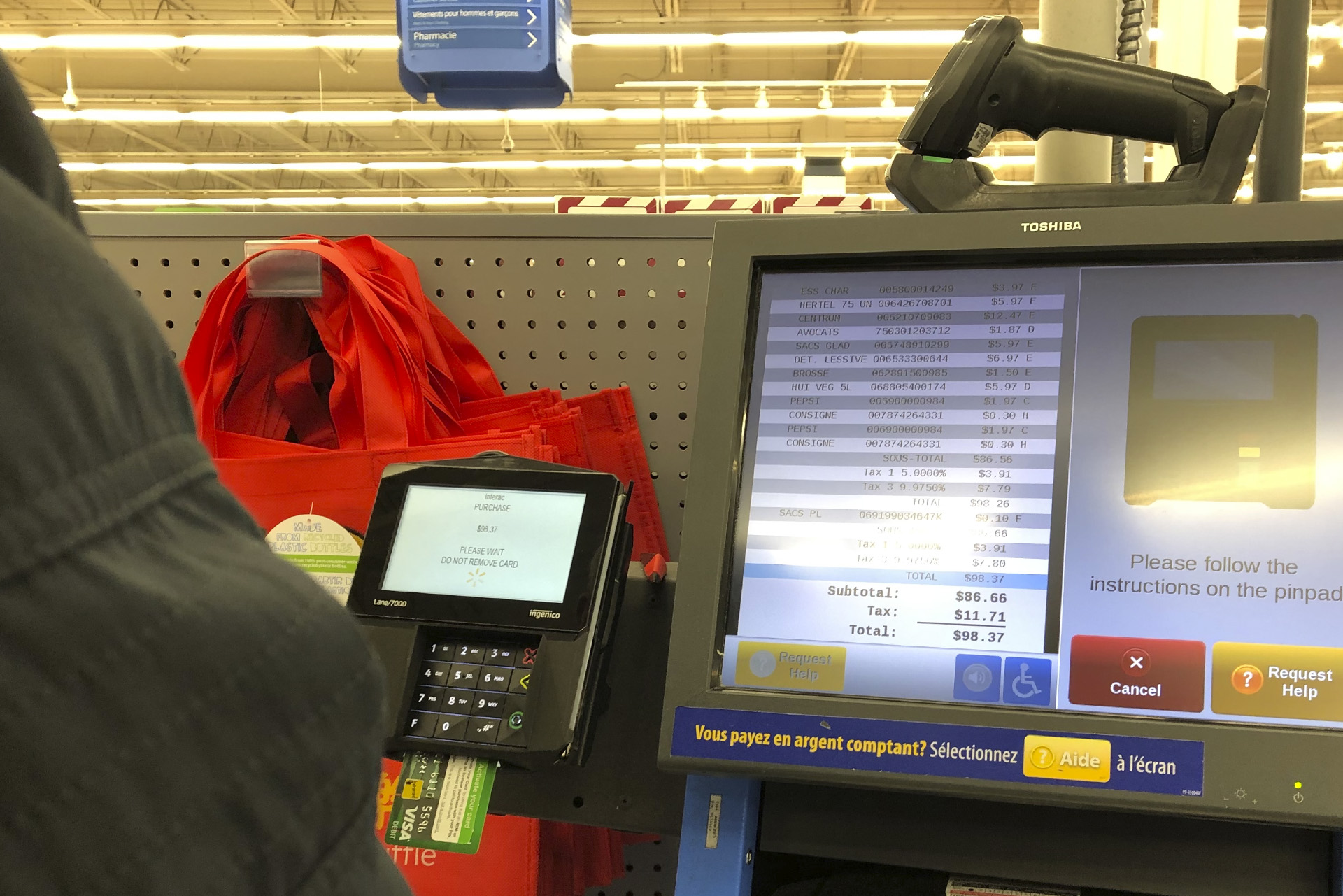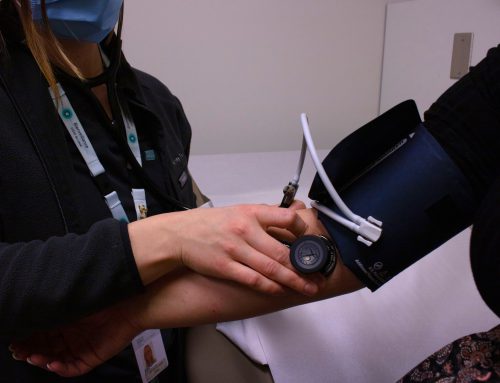BY Ann Krystel Désirée Michel & Yordan Ivanov
There’s a lot of standing around at the IGA Vincent in Longueuil. From the customers waiting in line to ring up their items to those who stand outside waiting for their turn to enter the store. The most surprising kind of standing around, however, comes from the employees who stand by the self-checkouts. Armed with rags and sanitizer, they wait for customers to use the registers. Still, their weapons aren’t used as frequently as one may think.
In order to limit contact amid COVID and not depend on cashiers too much, the IGA spent two weeks over the summer renovating the store and installing self-checkouts. The only problem is that the customers aren’t using them as much as management had hoped.
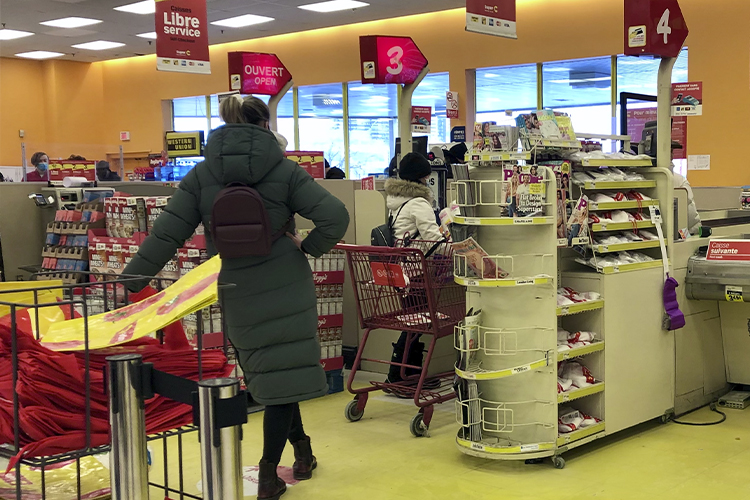
The Super C on Saint-Jacques experiences the usual line-ups despite the availability of self-checkouts. Photo by Yordan Ivanov.
“A lot of people prefer to wait for a cash register to free up than to use the self-checkouts,” confirms IGA cashier, Jordan Lelièvre. “Sometimes, we even have to encourage them to use them.”
The section reserved for the machines is often deserted. No matter how long the lines at cash registers are, some customers walk straight past the available self-checkouts to wait behind someone else.
According to Lelièvre, they find them too “intimidating.”
“A lot of people assume they’re too complicated to use,” confirms Lelièvre. “Others think that it takes longer to pay with them, especially when they ring up produce and need to enter how much they have.”
Other customers wonder what automation will do to human contact.
“People are already always on their phones and don’t interact with each other as much as they used to. I don’t see why it’s necessary to add more screens,” says Dominique Cyprien, a shopper.
However, change is coming and it’s coming fast.
On Jan. 13, McGill University’s school of retail management partnered with Alimentation Couche-Tard Inc. to open one of Canada’s first frictionless stores. This means no cash registers and no cashiers. The store in the Bronfman building of McGill’s downtown campus is now open to the public.
An inside look into the newest trend in retail. Video by Yordan Ivanov.
Some cashiers are worried about what stores like these, as well as automation, will mean for them and their customers.
Alexandra Roy-Cadieux, a supervisor as well as cashiers at the grocery store Metro is one of them.
“A lot of elderly people shop at the grocery store where I work since we’re situated near homes and CHSLD,” says Roy-Cadieux. “These people spend most of their time isolated so you can tell they look forward to talking to people, even if it’s just a cashier.”
Roy-Cadieux also believes that having an entry-level job provides her with skills that she wouldn’t necessarily learn elsewhere.
“Being a cashier offers real working experience,” adds Roy-Cadieux. “It also forces us to use our judgment when someone comes in to buy lottery tickets or alcohol and we have to decide when to ask for their ID. It also teaches us a lot about people since we work in customer service.”
Roy-Cadieux, 21, uses the money she makes as a cashier to pay for rent as well as for school. She isn’t the only young person to depend on her entry-level job to cover her expenses.
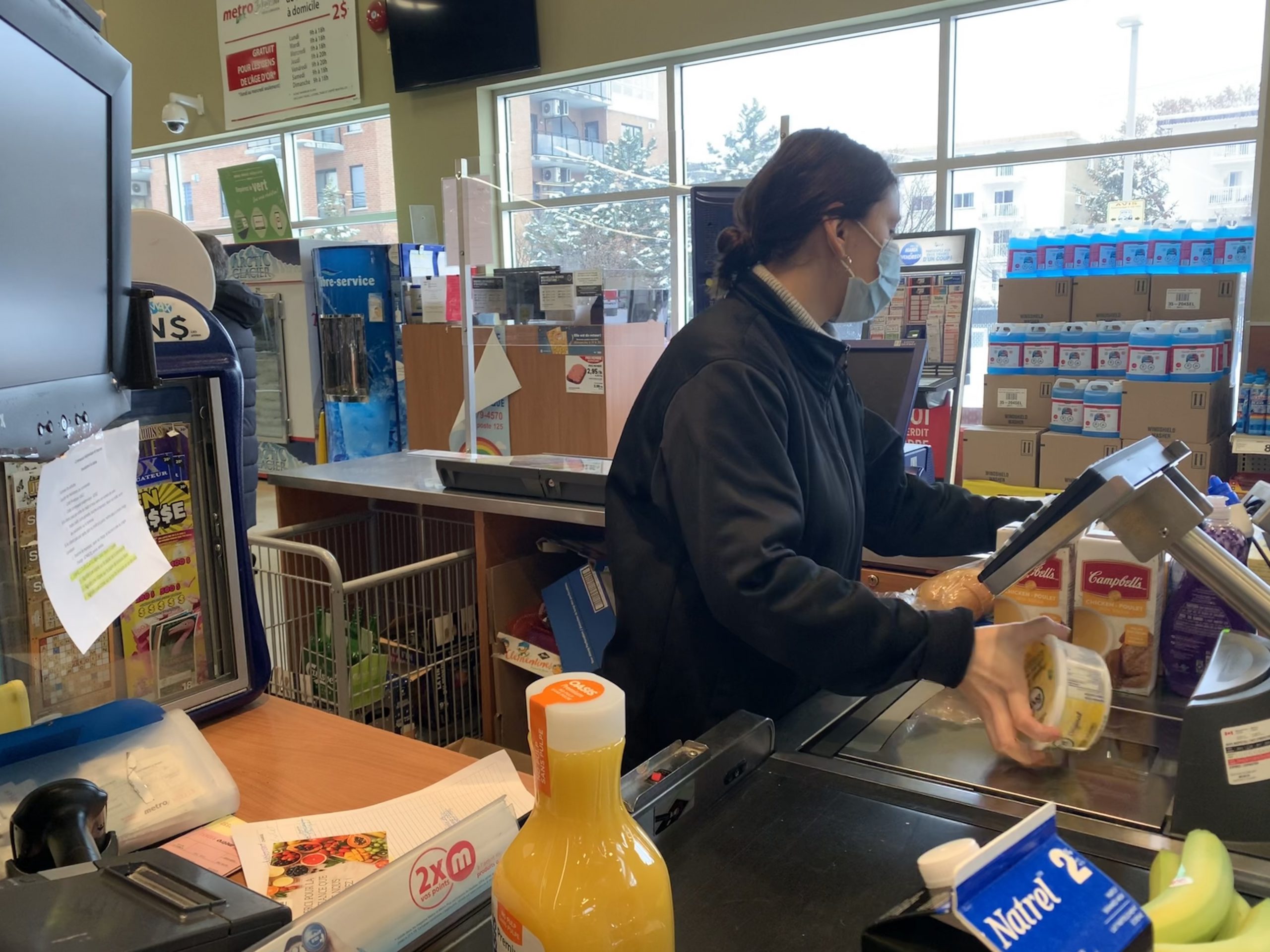
The Metro, where Roy-Cadieux (pictured above) works, has yet to install self-checkouts despite how busy their store gets. Photo by Ann Krystel Désirée Michel.
Kasia Tomasinska is a senior manager at Yes Montreal, a non-profit organization that helps young anglophones find employment and build companies. She confirms that entry-level jobs like cashier help young workers.
“We’re talking about people who are playing a role in supporting their family, who might have children or who may be living independently,” says Tomasisnka. “Entry level jobs are more flexible in terms of hours. That allows for a level of flexibility.”
She explains that some people working those jobs often use them as a stand-in. It helps them in keeping their heads above water while they finish school, or while their family gets back on their feet.
“For people who might not have a post-secondary education or have difficulties finding work in the field they studied in, entry-level jobs provide a level of unskilled labor,” says Tomasinska.
If those jobs such as cashiers were to get replaced by automation, she believes that those people would find a way to manage, but would struggle a lot more than they would normally have to.
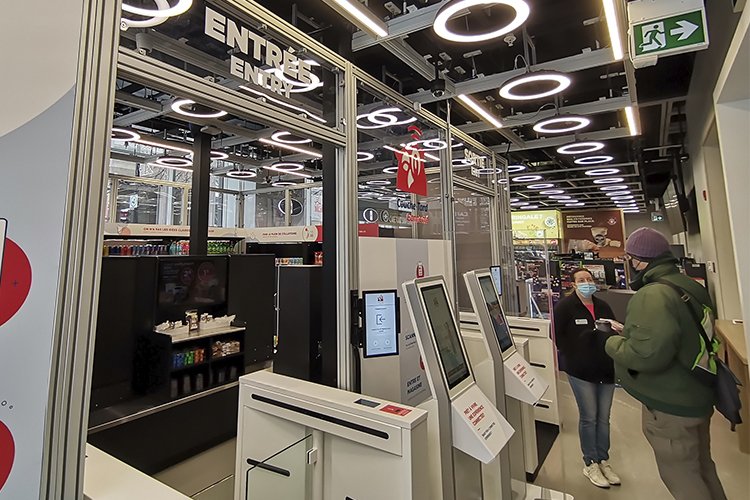
Even full automation, like the case of Couche-Tard Connecté, requires additional assistance provided by an employee. Photo by Yordan Ivanov.
Roxane Larouche, spokesperson for the United Food and Commerce Workers union (UFCW) which represents 50,000 workers in Quebec, believes there will still be a demand for workers even with automation.
“There’s always a lack of workers in food commerce. In grocery stores, especially, it’s hard to maintain a steady stream of employees. There’s a lot of turnover,” explains Larouche. “Every year, about 90 per cent of the staff in grocery stores in Quebec changes.”
A lot of the workers consider a job at a grocery store, while helpful in terms of covering expenses, to be temporary. It exists in the in-between.
“Self-checkouts are a big help to employers and they’re not here to replace cashiers,” adds Larouche.
Employees are still very much needed to help customers use them, to disinfect them after they’ve been used, and to make sure there’s no theft.
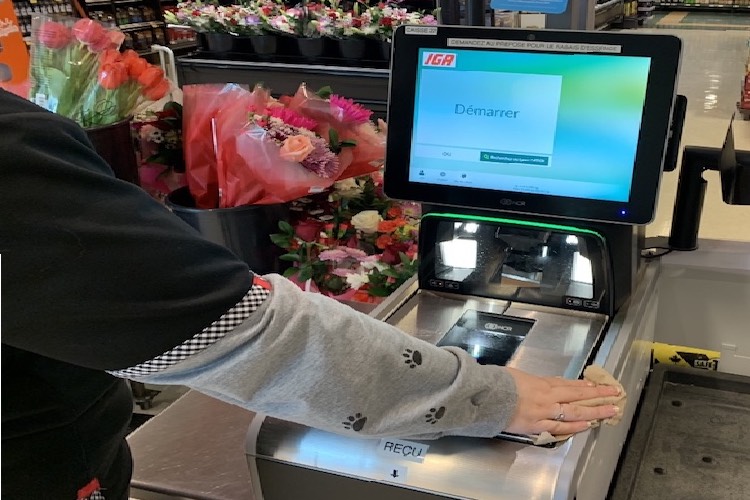
At the IGA Vincent, the employee in charge of disinfecting the machines also answers the (many) questions customers have. Photo by Ann Krystel Désirée Michel.
She also says that it doesn’t take too long for employees to learn how self-checkouts work. They work the way regular cash registers would, making it easy for them to learn the ins and outs.
“Customer service will always be a priority,” reassures Larouche. “When customers go to places like IGA, they do so because they expect to be taken care of whether it’s a cashier or a bagboy. COVID has proven just how much we rely on grocery store workers.”
Larouche believes that cashiers will never be replaced.
“For some people, talking to a cashier is the only form of human interaction they get, the only “hello” they get in a day,” says Larouche.
However, no matter how important, human interactions can’t replace the fact that grocery store managers needed to find a solution for the constant turnover. Self-checkouts take care of that problem and keep them from worrying too much about a lack of cashiers.
Despite the solution they present themselves as, it will still take some time for some customers to warm up to them. At the IGA Vincent, self-checkouts, as well as the employees who are meant to help people use them, stay waiting.
Still, this standing around, evidently, can’t stand in the way of progress.
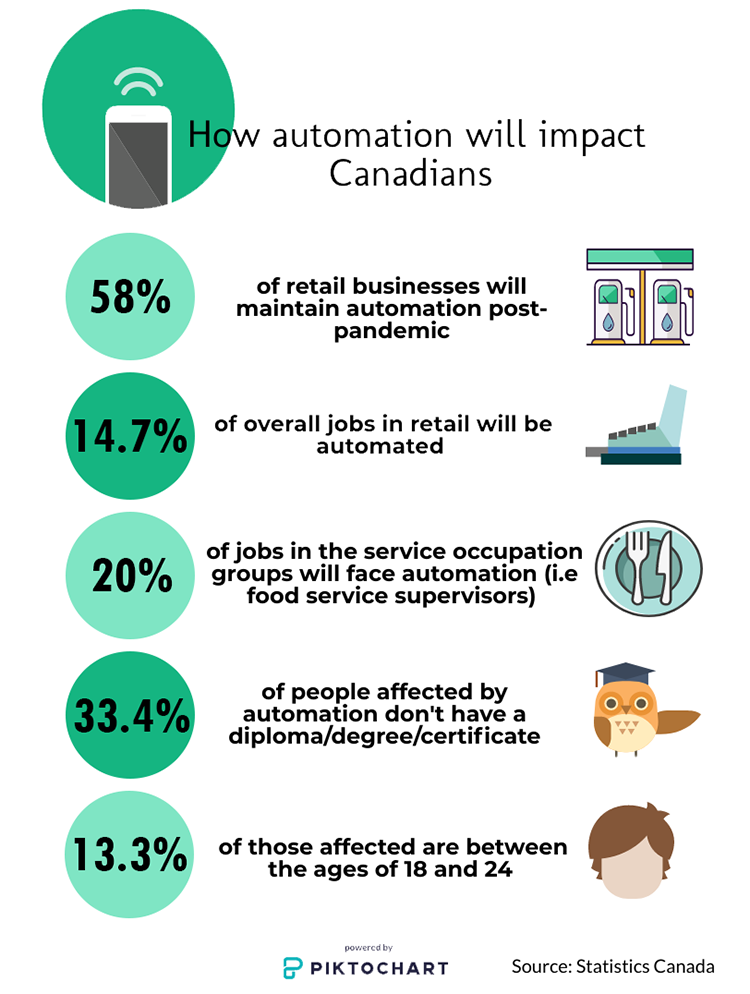
Automation will undoubtedly impact Canadians going forward. Media by Ann Krystel Désirée Michel.
